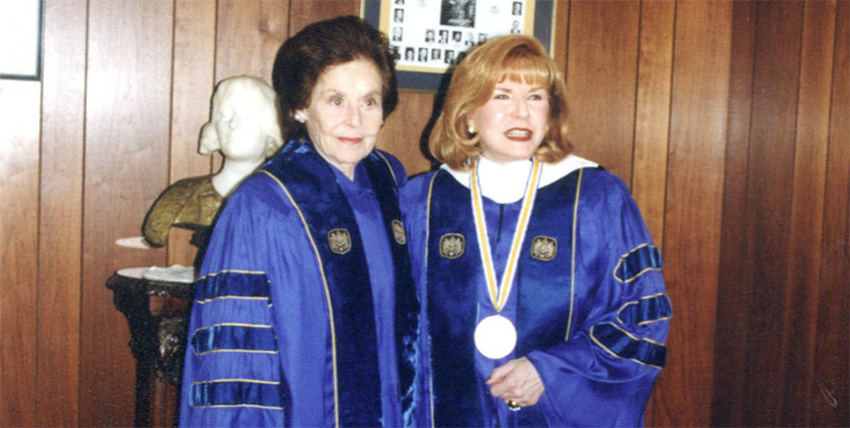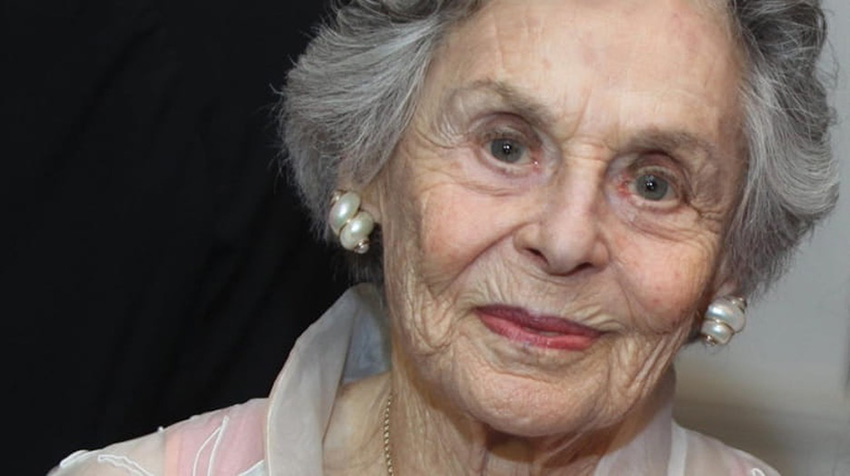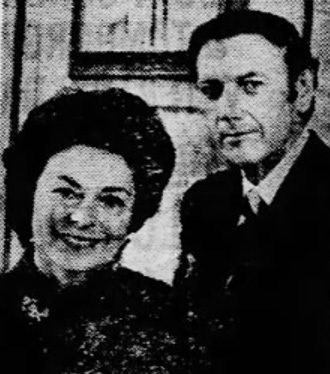Two lives well lived: He was a diplomat, she was an advocate for social justice.
Arnold A. Saltzman (1916-2014)
Joan Roth Saltzman (1919-2019)
More than half a century ago, the Treaty on Non-Proliferation of Nuclear Weapons went into effect, limiting the spread of nuclear technology around the globe. Ushering in a new era of nuclear arms control required a seasoned diplomat and a skilled dealmaker. The United States had one in Arnold Saltzman, the Sands Point resident who received a presidential commendation for his work.
Arnold, who graduated in 1936 from Columbia College, served his country on public and private diplomatic missions under five presidents. His roles ranged from trouble shooter for the U.S. State Department during the Kennedy and Johnson administrations to U.S. ambassador to Czechoslovakia, South and Central America, to special envoy to the Soviet Union and, after its breakup, to former Soviet republics Kyrgyzstan, Georgia, and Ukraine.
Across Long Island and in New York City, institutions are named in honor of both Arnold and his wife, an advocate for racial and social justice.
Arnold Asa Saltzman was born October 1, 1916, in Brooklyn to Isadore and Dora Saltzman, Jewish immigrants from Russia and Czechoslovakia, respectively. In grade school, he was runner-up in a citywide oratory contest, and never looked back. He graduated from Tilden High School at age 16, and went on to Columbia College, where he was president of his fraternity.
Although he majored in government and economics, Arnold later said the single class he took in art history formed one of the great passions of his life: collecting art.
After graduating college, Arnold joined his family’s sweater company, Premier Knitting. During a sales call to Abraham & Strauss department store, a young salesclerk, Joan Roth, caught his eye, and he invited her to lunch. That night, she told her mother “I just met the man I’m going to marry.”
After a three-month courtship, Joan and Arnold wed November 21, 1942, in a rabbi’s study in Manhattan. For their honeymoon, they rode a train to Washington, D.C., where Arnold had taken a job with the Roosevelt administration in the Office of Price Administration, the agency responsible for rationing goods and stabilizing rents and prices during World War II. In 1943, he enlisted in the U.S. Coast Guard as an ensign and was discharged as a lieutenant junior grade.
After the war, he returned to the family business, and soon took over as president. When the Premier Knitting merged with textile manufacturer Botany Industries in 1957, Arnold was named a vice president and director. Four years later, he sold his interest in the company and became chief executive officer of the Seagrave Corporation, a company that manufactured fire-fighting equipment. Under his leadership, Seagrave diversified into leather processing, paint and industrial finishes, low-cost housing, and mortgages. In 1961, Seagrave became Vista Resources; Arnold sold his shares in 1989.
All the while, he continued to divide his time between the public and private sectors—and working for peace and prosperity. In the early ‘60s, he advised the Office of Economic Opportunity and the Peace Corps. During a 1967 protest in Washington, D.C., he marched holding a hand-made sign: “Businessmen Against the Vietnam War.”

Arnold was a close friend and advisor to Sen. Hubert Humphrey during his presidential run in 1968. In an interview with the Long Island Press, Arnold described Humphrey as “the greatest American of our century … If he had succeeded, we would have had a much better country.”
In 1974, Arnold joined the U.S. Senate race in New York but bowed out after gaining little support for the Democratic nomination. Instead, he served as an unpaid advisor to New York’s congressional delegation. Two years later, he chaired the federal Advisory Committee on National Growth Policy Processes; it published a report titled Forging America’s Future: Strategies for National Growth and Development.
In June 1984, Arnold appeared before delegates of the Democratic National Committee (DNC) as it debated the party’s official platform for that year’s presidential race. He told the committee that America “will neither contain communism nor any other political virus such as Islamic fundamentalism unless we embark on a more carefully crafted force of strategic planning.”
“We find ourselves reacting to crisis after crisis, ready to spend hundreds of millions of dollars to try to bail out messes but will not anticipate and prevent them,” he said. Why? “Because our foreign policy has been based primarily on political or military considerations without proper emphasis on economic implications.”
He told the DNC delegates that, a decade earlier, he had chaired the National Committee on American Foreign Policy, a congressional advisory committee that studied how the presidency and Congress made major decisions, and he discovered two problems: “They make policy in bits and pieces,” he said, and they “lack the capability to look ahead and devise solutions based upon what the future might require instead of the past … Thus, we need to create … an early warning system to anticipate problems before they descend on us,” he told the delegates. The committee was led by Rep. Geraldine Ferraro (D-New York), the Democrats’ vice-presidential nominee, running alongside Sen. Walter Mondale of Minnesota.
Back at his alma mater, Arnold served as chairman of Columbia College’s board of trustees and he established the Double Discovery program, pairing Columbia students with youths from low-income communities to help them achieve their college goals.
In 2003, the university recognized his longstanding career in American foreign policy by renaming its research center established in 1951 by President Dwight D. Eisenhower the Saltzman Institute of War and Peace Studies. “Anything that can fight war and promote peace I’m for!” Arnold told the Long Island Press.
Over the decades, Arnold and Joan Saltzman were leaders, volunteers, and benefactors of a number of Long Island institutions:
- The Joan and Arnold Saltzman Community Services Center at Hofstra University. Hofstra awarded Arnold an honorary doctorate in 1986, and he served as a Hofstra trustee from 1987 to 1994, when he was elected trustee emeritus. Joan received an honorary doctorate in 1999.
- The Port Washington library named a reading room in their honor after they made a generous donation.
- The Nassau County Museum of Art in Roslyn designated the main three-story, Georgian-style mansion the Arnold and Joan Saltzman Fine Arts Building.
Arnold, a major collector of early 20th century European art, was a member of the acquisitions committee of the Museum of Modern Art in 1989, when Nassau County Executive Thomas Gulotta asked him to form a board of directors to take over the county’s art museum in Roslyn. He accepted the challenge and became the museum’s founding president.
The Saltzman family art collection encompassed Modernists (Chagall), Impressionists (Degas), Cubists (Picasso), and Surrealists (Miró) plus Brancusi, considered a patriarch of modern sculpture. Their collection of German and Austrian Expressionism was considered one of the strongest in the world, and two of their sculptures and 22 paintings and were part of a 2021 Expressionist exhibition at the National Gallery of Art in Washington, D.C. They later donated a collection of 16 works to the National Gallery, so, as Arnold put it, “The American people could enjoy it forever.”
Over the years, the Saltzmans loaned many pieces to the Nassau art museum as well. In 2015, the museum filled nearly all of its galleries with 35 of their paintings in an exhibition dedicated to its “founding president and guiding spirit.”

Arnold Saltzman was the ambassador, but Joan Saltzman was the embodiment of inspiring leadership and civic responsibility. She was born November 1, 1919, in Manhattan to Rae Shuyer and Louis Keller Roth. She graduated from Barnard College in 1941 with a bachelor’s degree in sociology.
She and Arnold moved in 1946 to Long Island’s North Shore, where they raised their sons, Eric and Robert, and daughter, Mimi.
In 1956, she helped found what is now called the North Shore Child & Family Guidance Center. She also established group homes for children and adults with developmental disabilities. Her dedication to helping people with developmental disabilities stemmed from her experiences with her autistic granddaughter, Chloe, her son Eric told Newsday. “She made this beautiful girl her top priority in life.”
Joan’s longtime friend Marge Rogatz of Port Washington said Joan worked to provide apartments to families without homes, set up volunteer nursing programs for people who were homebound, and volunteered with Planned Parenthood.
“She was really able to move mountains,” her friend said, “never calling attention to herself, never looking for accolades.”
In 1973, Joan co-founded Community Advocates, focusing on racial and social justice, Marge said.
“She was very clear about the importance of civil rights and racial equity issues,” said V. Elaine Gross, ERASE Racism’s president. “It was very close to her heart.”

In 1975, Joan Saltzman received the Nassau County Public Citizen of the Year Award. She helped start The Trust’s work on Long Island in 1978 and was a founding member of its advisory board, on which she served for more than 30 years. She also was a founder of what is now known as the Long Island Women’s Fund.
Hugh Carey, New York’s governor from 1975 to 1982, appointed Joan to several health-related councils, including the New York State Health Coordinating Council, the Office of Mental Hygiene Planning Council, and the Advisory Council on Alcohol.
“If she were described as a philanthropist, that sounds like she had money and did the right thing with it,” her son Eric said. “But she rolled up her sleeves and just did everything.”
Arnold Saltzman died at his family home in Sands Point on January 2, 2014. He was 97. To no one’s surprise, he was working at his Manhattan office until a few weeks before his death.
In his obituary in The New York Times, his family wrote: “The love of Arnold’s life was, and remained to his last day, his remarkable wife, Joan, who survives him. Everyone recognized this, as in this toast at his 80th birthday: “To the best thing about Arnold—Joan. To which Arnold promptly assented.”
Joan passed away February 9, 2019. She was 99.
Their unrestricted fund at The New York Community Trust carries on their generosity.
